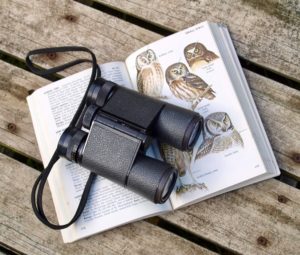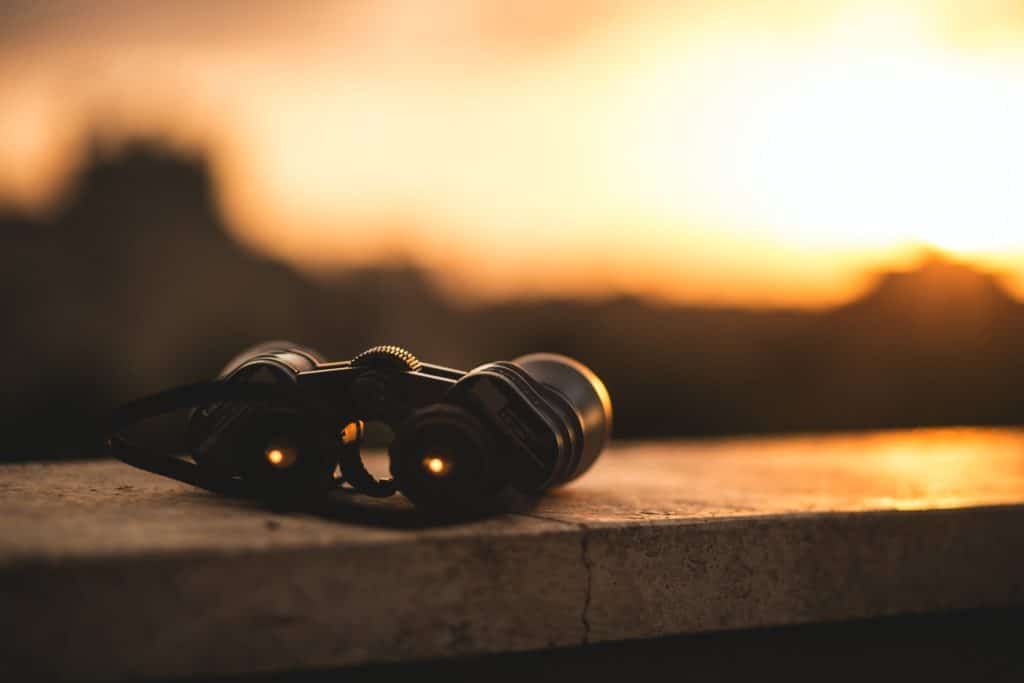Zoom binoculars are versatile. Their variable magnifications allow you to switch between different zoom levels depending on how up-close you want your target. Simply turn a knob to move from the low to mid, then the highest magnification power.
But finding suitable zoom binoculars for you can be difficult. Prices and quality vary immensely, so what’s essential, and where do you compromise?
We’re here to discuss the best zoom binoculars. We want to help you find the ideal zooming optics for your needs—by reviewing the top products in the market and breaking down a detailed buyer’s guide. Continue reading to learn more.
In case you’re in a rush, these are the best zoom binoculars in 2021
- Nikon 8252 Aculon A211 10-22x50 Zoom Binoculars Best Overall
- Bushnell Legacy Wp 10-22x50 Zoom Binoculars Best Value
- Celestron Skymaster 15-35x70 Zoom Binoculars Best Performance
- Pentax UP 8-16x21 Compact Zoom Binoculars Best Compact
- ESSNLB Giant Binoculars Astronomy 13-39x70 Zoom Binoculars Best For Astronomy
NOTE: There are optics with multiple magnifications that don’t qualify as zoom binoculars. That’s because to achieve their specified magnification power, you have to change to a different set of eyepieces. They’re usually written with a slash instead of a hyphen. For example, 10/20X30.
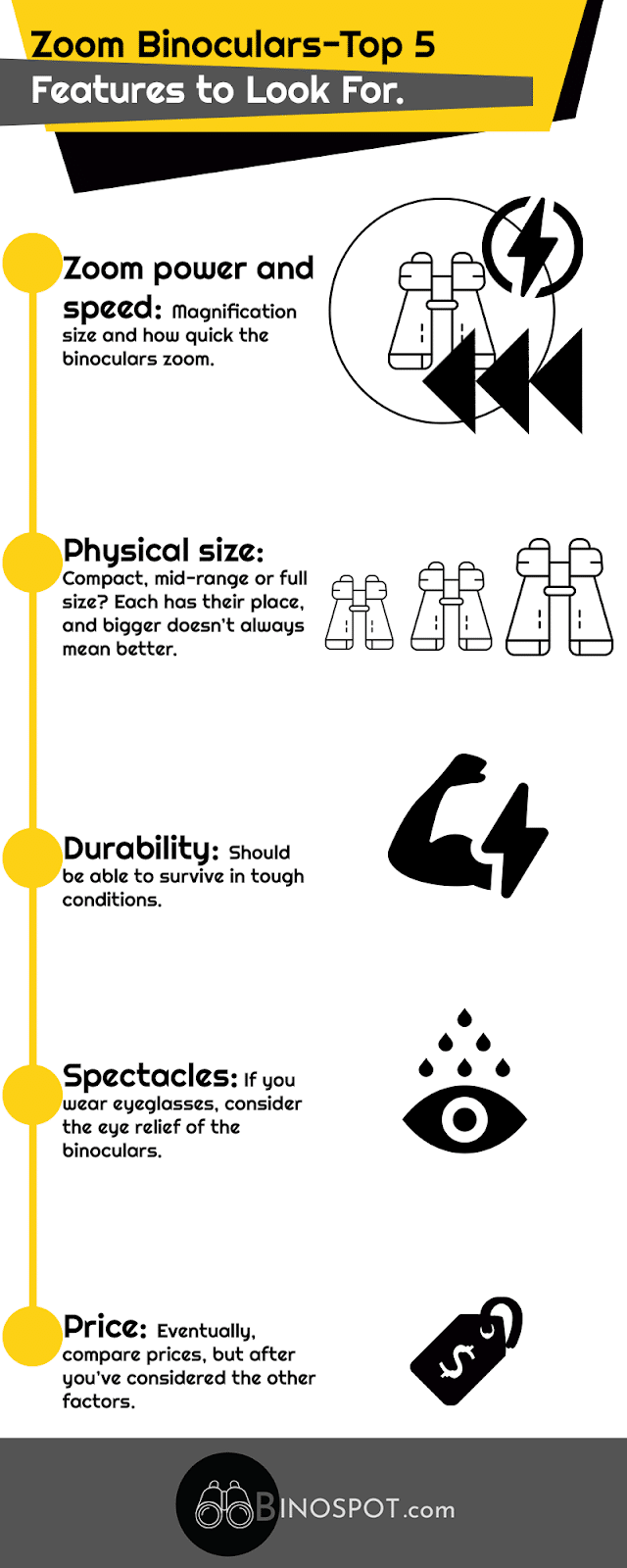
Zoom Binoculars Buyer’s Guide
To get the best variable zoom binoculars for your needs, you initially must consider a few main features. These are:
Zoom Power and Speed
Think about how much zoom you need in your binoculars. This will depend on how far off the images or views that you want to see are.
The speed at which you can zoom in and see images from a distance is also important to consider. Especially if you’ll be using the optical device for wildlife or bird watching where the target might be on the move.
Size of the Binoculars
Zoom binoculars come in different physical sizes. There are some with large objective lenses that require a tripod to support them, and then there are compact zoom binoculars that you can carry around comfortably.
Astronomical zoom binoculars have big objective lens diameters that allow for clear and brighter images from a distance.
They let in more light, which makes them perfect for low light conditions. It would be best if you got a tripod for such binoculars because holding them in your hand will be tiring, and at high magnification, you will get a lot of shake.
Durability
As most zoom binoculars are meant for outdoor use, they need to be strong enough to survive harsh elements from tough weather to rough handling. If they can stay in top shape for long, then you’ll be able to enjoy high-quality viewing for years to come.
Eyeglasses
Manufacturers of zoom binoculars are now creating optics that cater to the needs of people with eye issues, not only in the physical design but the specifications too. If you wear eyeglasses, you need to look for zoom binoculars that will serve you well and have a suitable eye relief distance.
Warranty
Quality optical devices usually have good warranties because the manufacturer trusts the performance and toughness of their product. So, considering you’d want binoculars that work and withstand the test of harsh elements over time, you should be on the lookout for an extended warranty—with favorable terms and conditions.
Prices
Lastly, you have to consider your budget. The aim here should be to look for the specs and features you want and only compromise down to the maximum you’re prepared to pay.
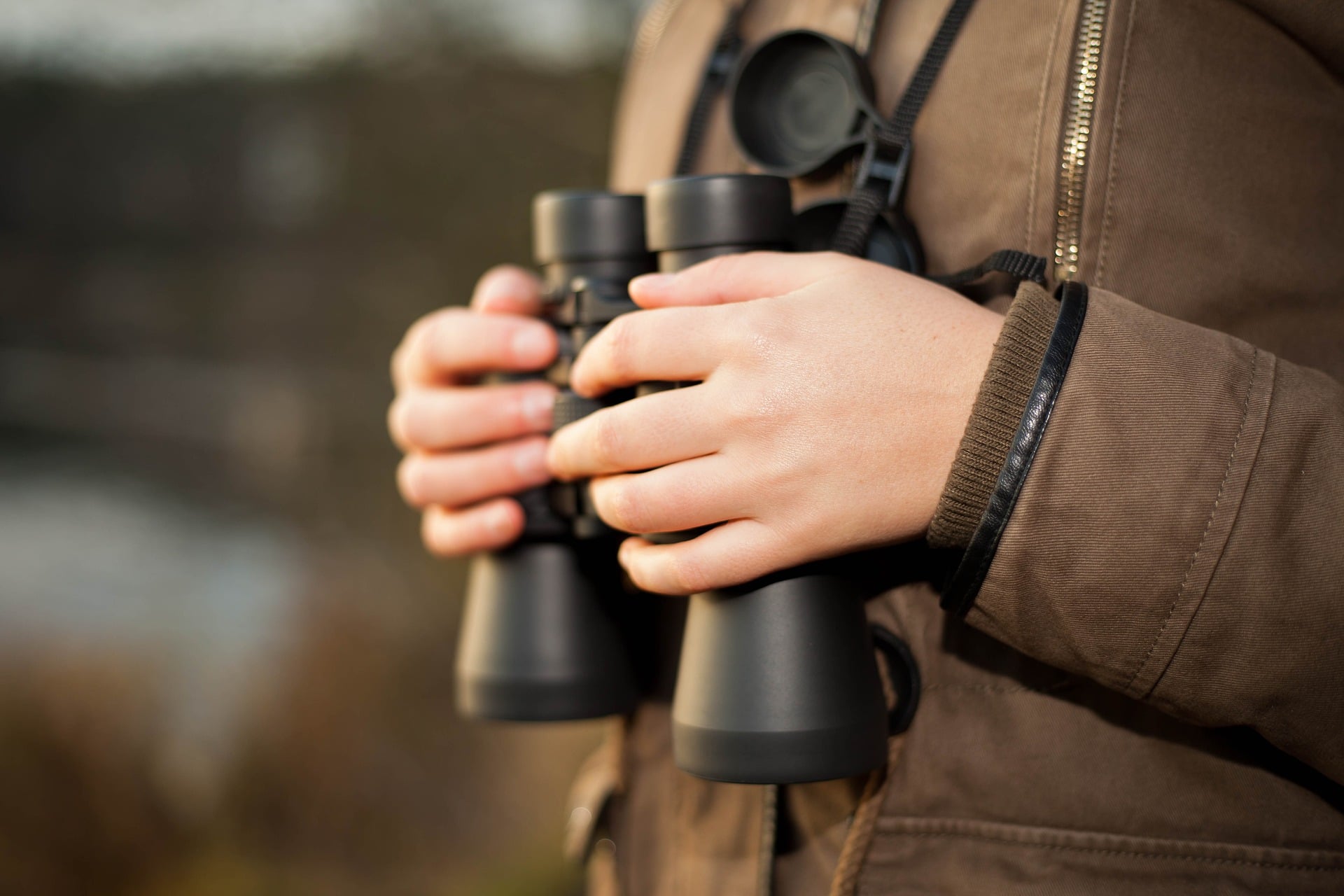
Crucial Binoculars Terms You Must Know
To avoid confusion when searching for the best zoom binoculars, you must learn some of the technical binoculars terms. These include:
Exit Pupil
This is a circle of bright light that you notice leaving the lens of your binoculars when you hold it away from your eyes. To get its diameter, you divide the aperture lens diameter by the magnification.
This diameter is critical because it influences how you see images through the lens at night when your pupil diameter enlarges. The exit pupil should always be bigger than your eye pupil diameter.
Unfortunately, in zooming binoculars, the exit pupil diameter is bigger on the low magnification power and smaller on the high magnification power.
Objective Lens Diameter
The objective lens diameter is the size of the lens that’s closest to your target. It’s measured in millimeters, and you’ll find it marked on the case of the optics as the third number after the magnifications. For instance, 10-20×50 binoculars have a 50mm objective lens diameter.
The primary purpose of this lens is to allow in light: the bigger the diameter, the more light, which then results in brighter and clearer images.
Minimum Focus Distance
The minimum focus distance is the shortest distance you can focus your zooming binoculars and still clearly see the fine details of an image. The distance varies depending on the magnification of your optical device. It increases with a rise in magnification power.
Field of View (FOV)
The field of view is the width of the area that you can see through the optical device at 1,000 yards. The higher the figure (in feet), the wider the area that your eyes can see.
Interpupillary Distance (IPD)
IPD is the distance between the pupils of your eyes. It should match perfectly with the distance between the binoculars’ lenses if you’re to fit your eyes comfortably in the eyecups. Look for binoculars with adjustable IPD to avoid inconvenience.
Twilight Factor
The twilight factor determines how well your binoculars function in low lighting. You can calculate it by multiplying an optic’s magnification by its objective lens diameter. Then, find the square root of your answer, and you have the twilight factor.
The higher the number, the more effective the binoculars are in low light.
Optical Glass and Prism Glass
Different binoculars have varying types of lens glasses. One of the most common high-rated optical lens glass is the ED glass (Extra-low dispersion glass). It’s excellent at accurately focusing light waves. The only problem is its instability under drastic temperature changes that alters the focal length.
You then have the prism glass that’s grouped into BAK4, SK15, and BK7 glasses. The best glass out of the three is the BAK4 (Barium Crown Glass). It transmits light better due to its high refractive index rate (1.5688), low critical angle, and round shape exit pupil. Sadly, these are very costly.
The BK7 (Boro-Silicate Glass) comes in second with a 1.5168 refractive index rate. It’s prevalent in optical devices due to its affordability. Unlike the BAK4, it has a square-like exit pupil that isn’t efficient in producing quality images.
Lastly, the SK15 is a balance between the BAK4 and BK7. It has the highest refractive index, but its dispersion comes second to the BAK4.
Types of Lens Coating
The coating helps to reduce reflections and light loss in lenses and prisms. Here are the different types of binoculars’ coatings.
- Coated: At least one glass surface on or more lenses have at least one layer of coating.
- Fully coated: All the lens/prism surfaces have a layer of anti-reflective coating.
- Multi coated: At least one glass surface on one or more lenses has a single or several layers of coating.
- Fully multi coated: All the lens/prism surfaces have more than one layer of anti-reflective coating.
Housing Style
Housing has a lot of influence on the ergonomic design of binoculars. The two main housing styles are the close and open bridge.
In open-bridge binoculars, the center is usually open with a firm stabilizing component that joins the two tubes located near the objective lenses. This makes it easier to wrap your hand fully and firmly around the optical device. The focus controls are near the eyepieces.
For the close-bridge housing, there’s no separation at the center. You have the focus controls, and center hinge enjoined into the body of the optical device. This makes them firm and steady, but you can’t achieve the full wrap-around grip.
Anti-Fog Technology
Anti-fog technology prevents air from mixing with moisture inside the binoculars’ tubes. This is done by pumping dry and inert gases (nitrogen and argon) into the tubes with lots of pressure. O-rings and gaskets are then used to prevent leakage.
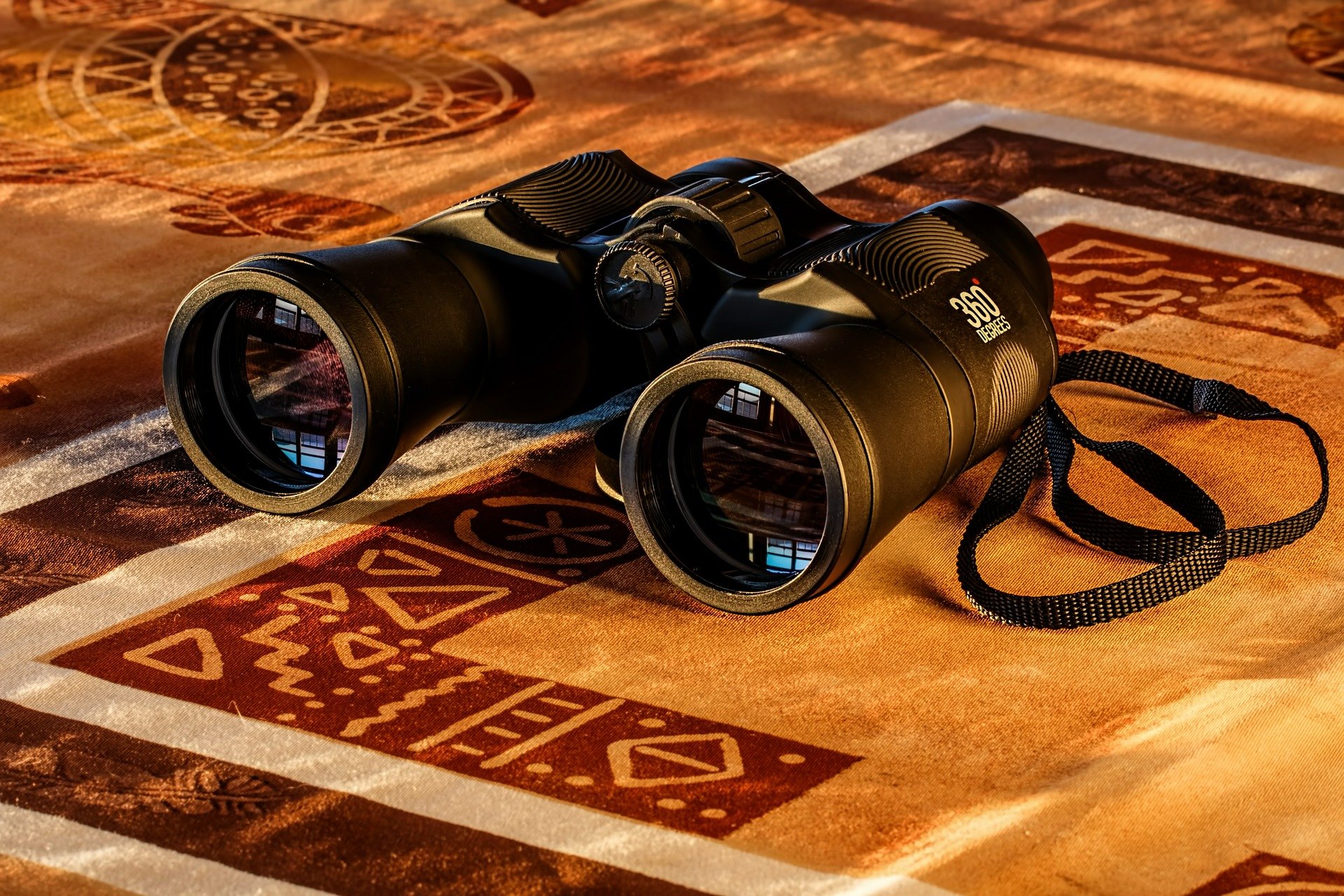
The Best Zoom Binoculars 2021
1. Best Overall
This Nikon model of zoom binoculars offers a combination of high-quality imagery, efficiency, versatile zooming, and durability. With its 10x to 22x magnification range, you can easily zoom in close on distant images.
To switch from the low to the high power zoom, simply adjust the easy-to-reach fingertip zoom control knob. The transition is fast and smooth.
Thanks to the 50mm objective lens diameter, more light gets into the binoculars resulting in clear and bright images. Plus, the eco glass multi-coated optics help to minimize glare and reduce light loss. This makes it ideal for low-light conditions.
To enjoy comfortable viewing for long, you can adjust the eye relief to a personalized fit by turning and sliding the rubber eyecups.
The ergonomic body design of the Nikon Aculon A211 binoculars has a durable rubber armored finish that enhances its non-slip grip and toughness. This is a good pair of zoom binoculars for bird watching, hunting, and people who love sightseeing outdoors.
The only problem you might have with these magnification binoculars is mastering how to adjust the zoom and focus knob.
Pros
- Clear and bright images.
- Easy and fast to switch from low to high magnification.
- Durable, ergonomic design.
- Adjustable eye relief.
- Uses a Porro prism system.
- Multi-coated optics reduce glare.
Cons
- It takes time to learn how to adjust the settings.
- It’s hard to hold the binoculars steady when using high magnification.
2. Best Value
These zooming binoculars also have 10x to 22x magnification with a 50mm aperture lens diameter.
They feature a Porro prism system that offers more depth and a wider field of view. Combine this with the premium BaK-4 prism glass and fully multi-coated lens, and you’re assured of a clear and bright view under different settings.
The field of view ranges from 66 to 42 meters at 1000 meters/199 to 126 feet at 1000 yards, while the close focus is 20 feet/6 meters. They’re reliable zoom binoculars for outdoor viewing experiences like bird watching and sports events.
Their body build features a 100 percent waterproof/fog-proof rugged rubber armoring that absorbs shock and provides a non-slip grip. The focus knob is right at the center for easy access.
Other beneficial features are longer eye relief, tripod adaptability, and twist-up eyecups. The product comes in a solid carrying case, and you get a neck strap and lens covers too.
The only challenge is carrying the weight of these zoom binoculars for long periods. The neck strap could help, but you’ll need a tripod to hold them firm when viewing images with high zoom power.
Pros
- Solid and robust build.
- A wide field of view.
- Longer eye relief.
- Waterproof (IPX7)
- Full multi-coating of the lens.
- Easy to reach the focus knob.
Cons
- Heavy.
3. Best Performance
When it comes to high performance among zoom binoculars, Celestron SkyMaster is up there with the best. With its lower-end 15x magnification, you can spot images that are far away, then turn it up to the highest 35x magnification to get a much closer look.
The zoom control is strategically positioned on the side to make it easy to reach. Plus, it only takes a flick of your finger to zoom in or zoom out. You then have the 70mm objective lens allowing in enough light for great image quality, even at the highest magnification.
Because of the multi-coated optics, there’s little to no light loss, and glare reduces significantly. Also, there’s a boost in the crispness of color and sharpness of detail.
Inside the tubes, light comes in contact with superior quality BaK-4 prisms that improve its transmission resulting in better viewing in low light conditions.
People with eye problems will enjoy the longer eye relief and diopter adjustment feature. The latter allows you to refine your view and make up for any differences in the strength of your eyes. You can easily fold down the soft, rubber eyecups whenever you want to view while wearing eyeglasses.
The Celestron SkyMaster zoom binoculars come with a tripod adapter, and the outer body is strong, rugged, and armored with a non-slip grip to offer protection against rough handling.
The other accessories include aperture lens caps, neck strap, rain guard, and user manual.
Pros
- Easy to adjust the magnification.
- Convenient for people wearing glasses.
- BaK-4 prisms enhance light transmission.
- Wide objective lens diameter.
- Clear and sharp images.
- Ergonomic design.
Cons
- Big and heavy build
4. Best Portable
If you want compact zoom binoculars to carry around with ease, this Pentax UP offering has a lightweight, unique, uni-body design to suit your needs.
The uni-body provides a single housing for the objective lenses, thereby synchronizing their movement and minimizing moving parts. This results in better functionality of the optics for years.
With a magnification range of 8x to 16x, you can easily spot distant objects and zoom in for an up-close view. The zoom adjusting knob is at the center, making it easy to reach with a single finger and adjust to your preferred magnification power.
Because of the bright, fully multi-coated optics, very little light is lost during transmission. You also have the Porro prism system that fine-tunes the lighting and images, further leading to brighter and crisp views.
The only drawback with these compact zoom binoculars is that they’re not waterproof. So, be careful when using near water.
Pros
- Easy to use.
- Compact and portable.
- Clear image quality.
- Lenses are completely multi-coated.
Cons
- Not waterproof.
5. Best For Astronomy
This long-range pair of zoom binoculars are ideal for both astronomical and terrestrial use. To start with, they have the highest high power magnification on the list. The 39x zoom will enable you to have a close-up view of far-away images. Add the 70mm objective lens, and you’ll enjoy a crystal clear image with a wide field of view.
Even better, the aperture lenses are fully multi-coated to ensure all the light that can fit through the lens makes it, and this leads to superior brightness and high contrast images even in low light conditions.
With an easy-to-reach control knob, it only takes a few adjustments to move from the lowest 13x magnification to the highest 39x.
There’s also a diopter ring for adjusting varying vision requirements between your eyes. If you wear glasses, then there’s adequate eye relief to make your viewing experience comfortable.
The best perks of these giant zoom binoculars are their smartphone adapter and a tripod adapter.
The phone adapter lets you set up your phone and take photos or videos of your views, while the tripod adapter makes it possible to connect a tripod and enjoy steady, hands-free viewing—which is perfect for astronomy.
Considering their size, you’ll need a tripod if you plan to use the binoculars for longer viewing periods. So, you should budget for it.
Pros
- Central focus knob.
- Wide-angle aperture lens.
- Long eye relief.
- Smartphone adapter.
Cons
- Big and heavy.
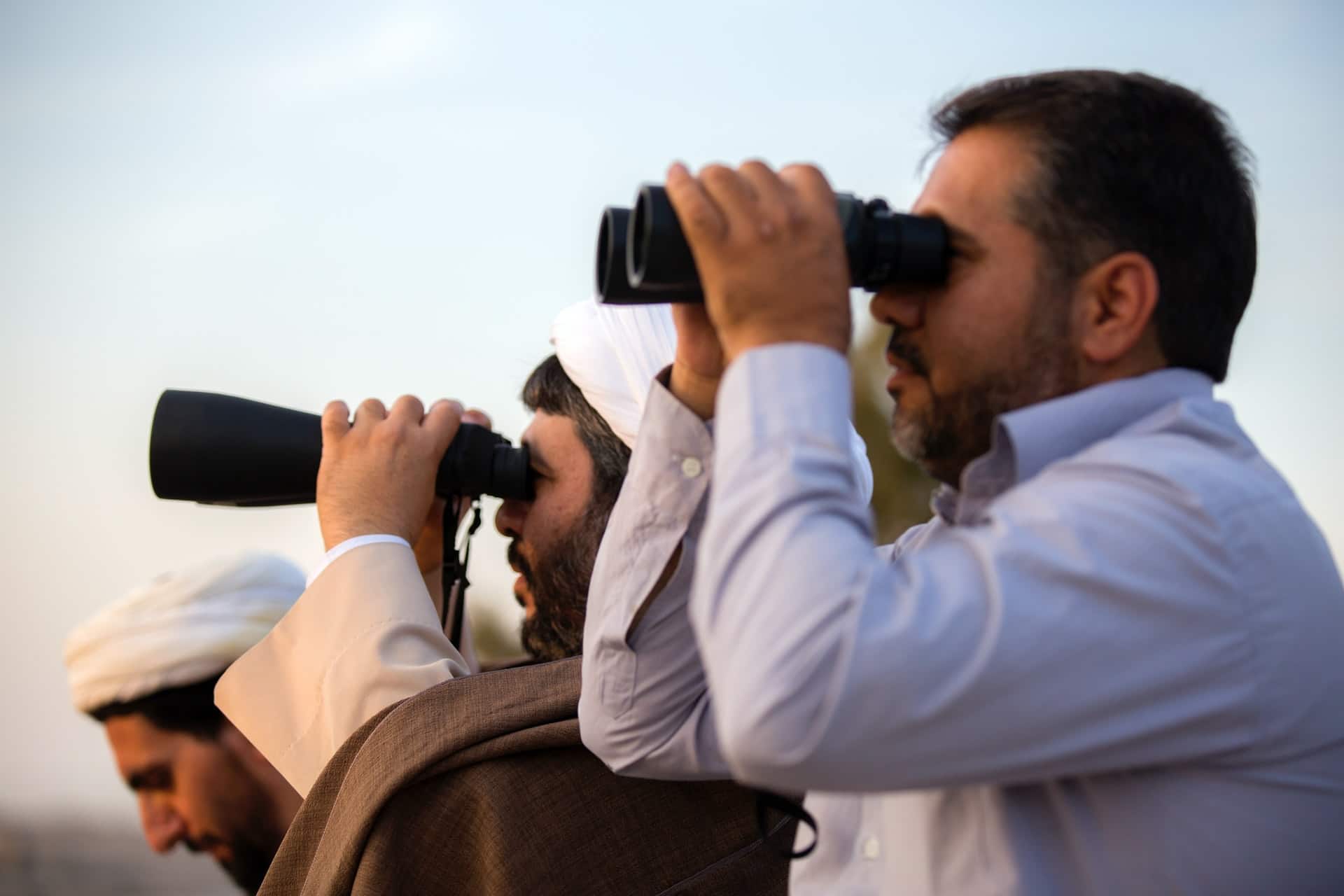
Frequently Asked Questions
What Is the Highest Magnification for Binoculars?
Currently, the highest magnification for binoculars stands at 160x. This is found on the Sunagor Mega Zoom Binoculars 30-160x70 . At their lowest magnification, the binoculars are more powerful than most optical devices.
What size zoom do I need?
Spotting over long distances for birds or other objects, you need at least 10x, You could use higher magnification, which will bring the objective closer, but this also dims its brightness.
Conclusion
The Nikon 8252 Aculon A211 10-22x50 Zoom Binoculars are our overall best zooming binoculars. They are a superior product from a reputable brand and have most of the qualities you’d want in zoom binoculars. Using them is easy, and they’re built to last.
If they don’t suit, you can now check out the other products and make an informed choice. After all, the aim is to get what works for you and your needs.







